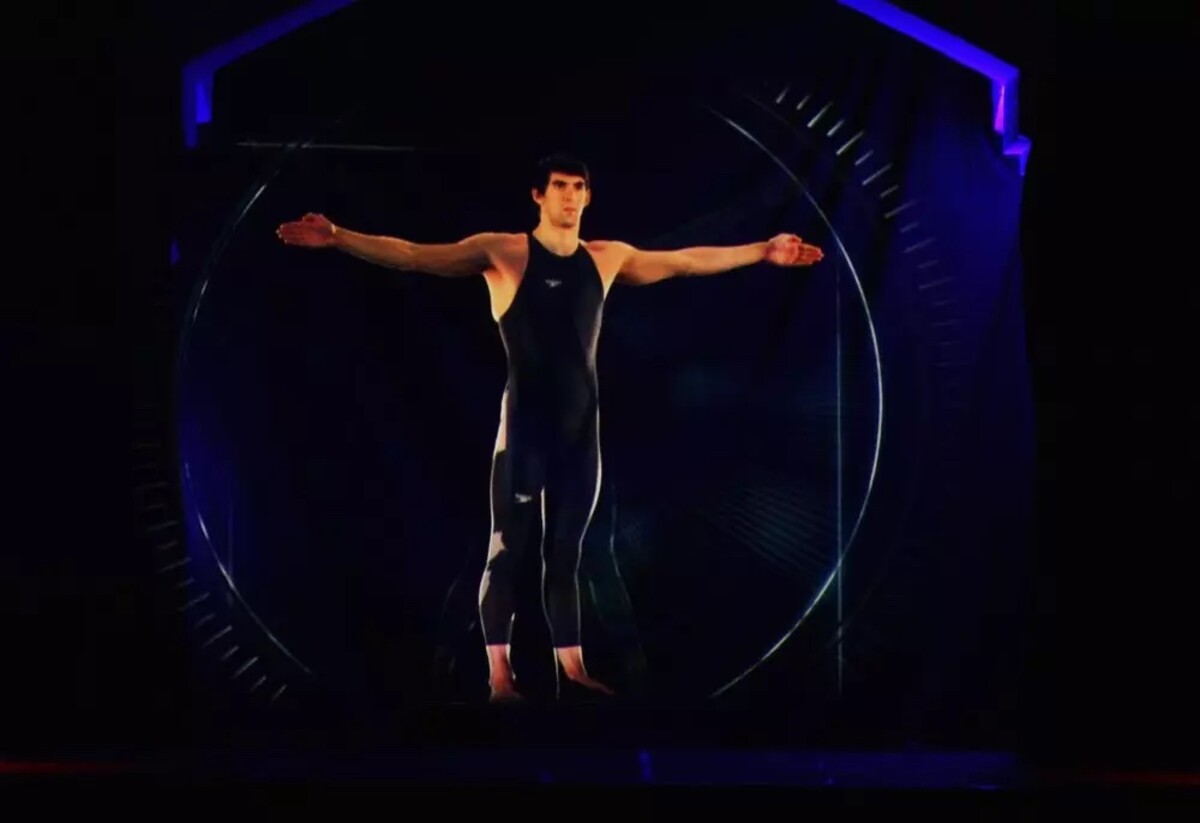 Ozempic can cause vision loss. A new study has shown a link between the drug and eye problems
Ozempic can cause vision loss. A new study has shown a link between the drug and eye problems
Ozempic can cause vision loss. A new study has shown a link between the drug and eye problems
Ozempic can cause vision loss. A new study has shown a link between the drug and eye problems
Where Are The Limits Of The Human Body And Sports Performance? According To Scientists, We Are At The Edge Of What Is Possible
According to scientists, we will soon approach an unbreakable limit.
If problems persis, please contact administrator.
The World Championships in Athletics in the United States, which became the scene of several phenomenal records, is now over. Probably the biggest 'event' was the twenty-two-year-old sprinter Sydney McLaughlin, who set a world record in the four hundred meter hurdles. She covered this distance in incredible 50.68 seconds.
The world record was also pushed by the Swedish pole vaulter Armand Duplantis, specifically to 621 centimeters. The boundaries of sports performance are constantly shifting. Where are the limits of the human body? And what positively or negatively affects sports performance in its constant shift?
Millennium of records
Athletics, which Duplantis and McLaughlin are competing in, is an industry in which many records have been broken this century. Of the seventy disciplines (if we count both the male and female categories), only twenty-seven of them survived the eighties and nineties of the twentieth century. In addition to the aforementioned Duplantis, the more current records will be difficult to break include, for example, the legendary Usain Bolt which holds records in the 100 and 200 meters.
But it's not just athletics. Significant breaking of records also occurs in the swimming category. American swimmers Michael Phelps, Caeleb Dressel and Briton Adam Peaty were responsible for this. Among the women, American Katie Ledecky and Katinka Hosszú from Hungary are phenomena.
Why are we improving?
The fact that there is a constant shift in the limits of the human body and breaking records even by incredible values is caused by more than one factor. According to the findings of scientists so far, among the most fundamental are:
New training methods
Sportsmen and sportswomen and the people who train them are constantly trying to improve their endurance in order to achieve peak performance. Mitochondria play a huge role in this area, producing energy for our body by burning sugars and fats.
"The muscles of elite athletes need extra efficient mitochondria for their activity. The muscles of sprinter Usain Bolt, which perform extreme output in a short period of time, require a different amount of energy when running than the muscles of endurance runner Eliud Kipchoge, where extreme endurance is at play. From the point of view of mitochondria, the difference between these disciplines is that elite endurance athletes can incorporate much more of them into muscle cells. However, one thing is common to all athletes – even if their body can activate mitochondria faster than non-athletes, this activation is never immediate," explains Vít Smejkal, assistant professor at the Medical Center in Prague.
Top athletes are constantly trying to keep the mitochondria on their toes and inventing new methods to get into physiological stress, a state that, among other things, triggers the replacement of old mitochondria with new ones. It also creates a standby energy reserve that athletes can use more quickly at a given moment.
One of the most common training approaches is to use high-intensity training to deplete all energy stores (glycogen) from the muscles and still continue training even with an empty energy tank.
According to the scientific journal Nature, the increasingly popular types of training are also:
- High-altitude training, during which, due to the lower amount of oxygen in the air, there is an increase in hemoglobin in the blood and a subsequent increase in the activity of the heart. According to research so far, exposure to high altitude for at least one month causes an increase in the number of mitochondria by up to eight percent.
- Training in high temperatures, which, according to scientists, could one day be even more effective than high-altitude. For example, cycling training at a temperature of 38 degrees Celsius, causing heat shock, is currently being tested. According to experts, this could have an effect on increasing the performance of mitochondria.
Technological progress
The constant development of technology is something that clearly helps athletes achieve better performances. Probably the best example is the already mentioned swimming. In addition to technological changes in pools (for example, changes in their depth or an increase in the number of racing lanes), another technological innovation caused the biggest improvement in performance, but it also became the subject of debates.

It was a new type of swimsuit for elite swimming sport called LZR Racer. The company Speedo introduced them in 2008, and their development was ij cooperation with NASA. Among other things, ultra-modern swimsuits helped swimmers strengthen their bodies, ensure better oxygenation of muscles, and reduced friction. Ninety-four percent of the male and female competitors who put on these swimsuits at the Olympics in Beijing swam to victory. Thanks to swimsuits, 23 of the 25 world records were broken at the games.
People who could not wear this type of swimsuit due to contracts with other manufacturers called it technical doping. In the end, the International Swimming Federation had to change the rules and banned swimsuits. However, the records achieved while wearing them remained valid.
Greater number of (elite) athletes
As the sport has evolved in recent decades, so has its media coverage, funding and general popularity with the public. With this, the number of sportsmen and women competing at the top level skyrocketed. For example, since the first post-war Summer Olympics in London, the total number of people taking part in them has almost tripled.
Statistically, there must be more and more sportsmen and sportswomen who are able to achieve extraordinary performances. From time to time, even a super talent appears who has the genetic predisposition to perform, as if from another planet. It is, for example, the already mentioned swimmer Michael Phelps. In addition to his indisputable talent, his body structure - a long torso and arm span - helped him win many medals. Usain Bolt's specific running technique is also often talked about.
Gene doping
The use of prohibited substances that help improve sports performance is widely known, and this negative phenomenon could be a whole separate article. A special type of doping, which we should mention in more detail, is the so-called gene doping.
Genetics play a big role in the lives of sportsmen and sportswomen. But science could change the genetic predisposition to certain sports. Gene therapy, i.e. interference with hereditary information that strengthens or suppresses the function of selected genes, was included in the list of the World Anti-Doping Agency (WADA) in 2003.
In sports, gene therapy could be used (or better said, misused) for example to improve oxygen transfer (using genes for erythropoietin), increase muscle mass (using genes for myostatin, follistatin or insulin) or improve tissue blood flow thanks to the gene for vascular endothelial growth factor. It is so obvious that the use of this therapy would be equal to the use of any other doping substances.
According to scientists, this is an issue that could enter sports to a greater extent in the course of the next few years. An infamous pioneer in this direction was cyclist Lance Armstrong, who used the drug erythropoietin (EPO) throughout his career to increase the number of red blood cells.
Where is the ceiling of human performance?
Teams from sports, medicine, biomechanics or physiology are trying to answer this question. Probably the most serious study in this direction was published by a scientific team led by evolutionary anthropologist Herman Pontzer in 2019, which dealt with the metabolic limit in sports research.
Since 2015, scientists have monitored the energy expenditure of sportsmen and sportswomen in several disciplines. They focused on the extreme cycling race across America, during which the participants have to travel up to 4940 kilometers, or on triathletes, the Tour de France race and some arctic expeditions. The conclusion of their research was clear: A person cannot continuously release more than 2.5 times the resting energy expenditure.
It has also been shown that the longer the sports performance lasts, the harder it is to burn calories. So people can exceed their energy expenditure during shorter races, but this is unsustainable in the long term.
According to the sports institute INSEP in Paris, the human body has its limits. According to their research, sportsmen and women have achieved ninety-nine percent of everything possible. They also added a mathematical calculation according to which in 2027 half of the total number of 147 sports branches will reach the estimated limits. After that, it will not be possible to move them by more than 0.05 percent.
Limits, for example in extreme sports, can also be determined by health limits, such as overheating of the body or hypothermia. There is also a risk of health problems when diving without equipment. In many extreme sports activities, in addition to pushing the limits of the human body's capabilities, there is also a risk to one's own health
If problems persis, please contact administrator.












